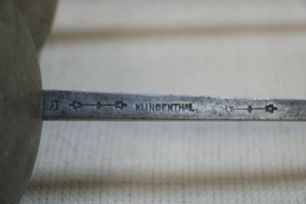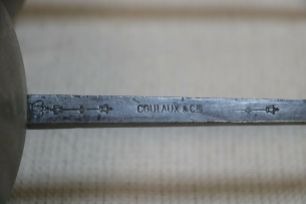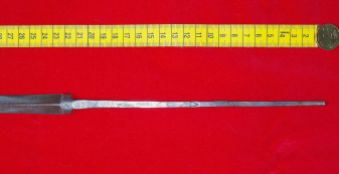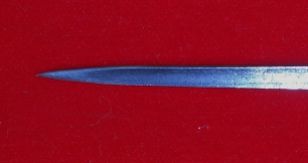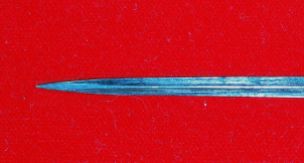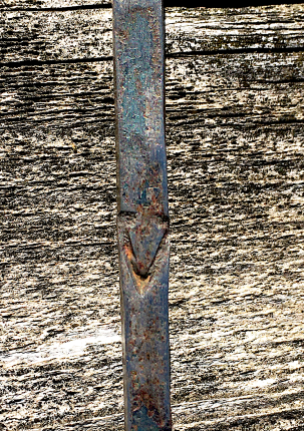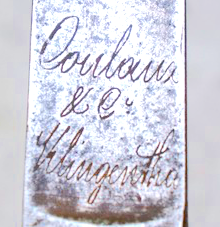
“Coulaux & Cie, Klingenthal”-marked blades date from 1850 forward… with additional dating clues provided by cutler marks.
The Coulaux family operated the royal forge and sword factory at Klingenthal from 1801 to 1838. An excellent short history of the factory and its markings through the 160-plus years of its corporate activities is provided by Jean Binck. We won’t restate it here.
Click here for a comprehensive list of Coulaux markings throughout the 19th century!
Blade Markings 1800-1818.
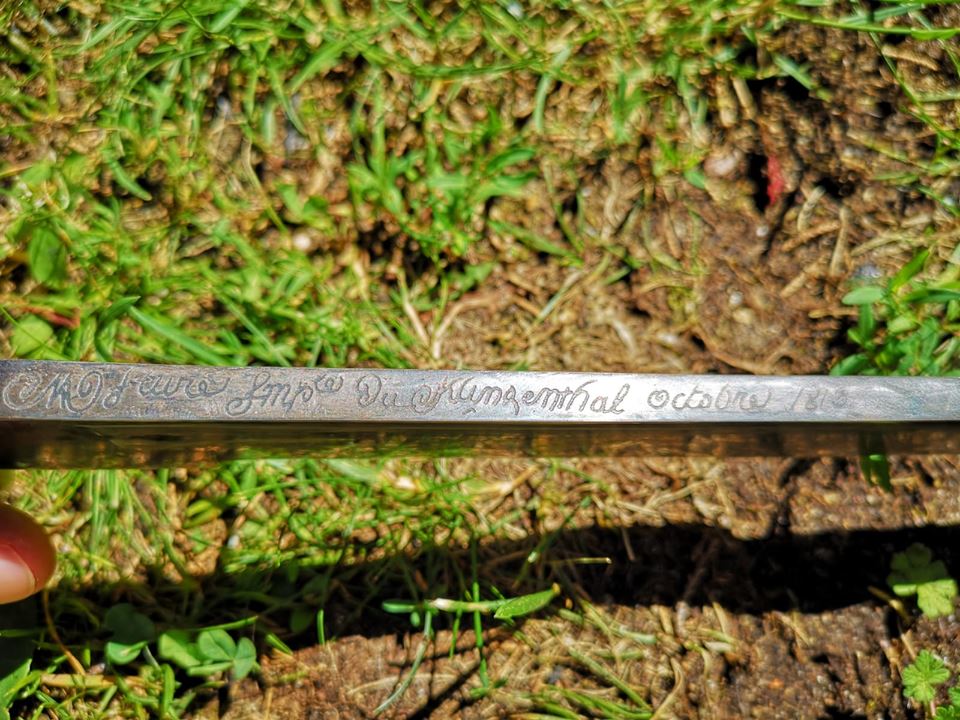
The “Imperial” phase of Coulaux is expressly dated to October 1813 on this blade.
Blade Markings 1838-1840.
Above: A fantastic pair of dueling sword dating to 1838-1840.
This mark, Manufacture de Klingenthal Coulaux ainé et Cie. indicates that the elder (ainé) Coulaux was continuing the business after the death of his brother. It was used between 1838 and 1840.
Blade Markings after 1840.
The characteristic marking “Coulaux & Cie, Klingenthal” marking was first used in 1840, when Coulaux had ceased producing regulation swords for the French Army
The specialized production of fencing blades and weapons proper began in 1850. Coulaux sold both assembled weapons (épées montées) as well as bulk blades, to which other fourbisseurs, cutlers, fencing suppliers, retailers, and exporters would add their own mark.
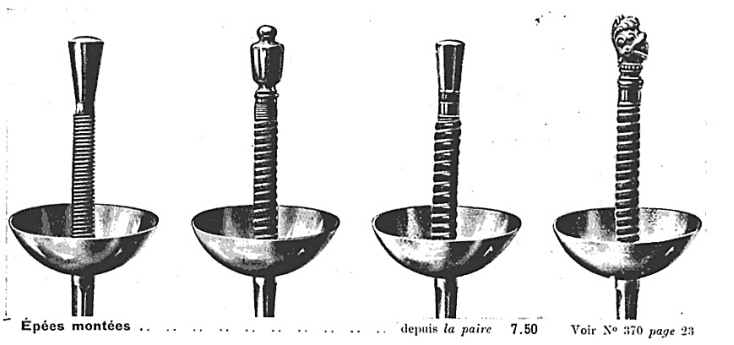
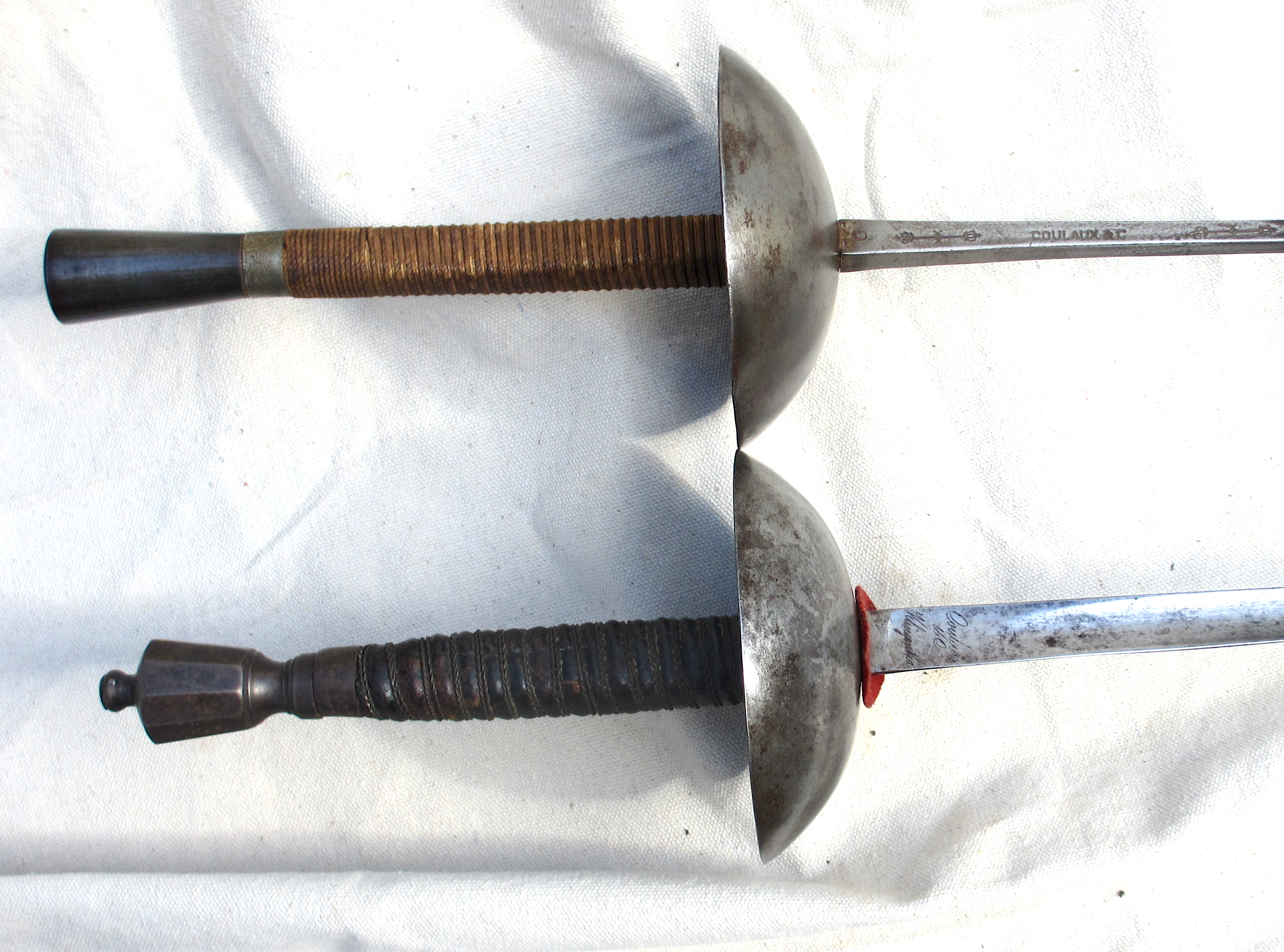
Coulaux & Cie.-made foil and epee, both with the same 11cm bell guard.
The above pair was recently sold at this very worthwhile forum. The images illustrate bright, unused fencing epees, just as they would have been sold back in the day!
Blade Markings after 1871.
From 1871 to 1914, Klingenthal was under German administration. The blades from this period were appropriately marked “Made in Germany”. The Cie. becomes Co.
Variants of this mark can feature imprinted capital letters and a crown near the hilt:
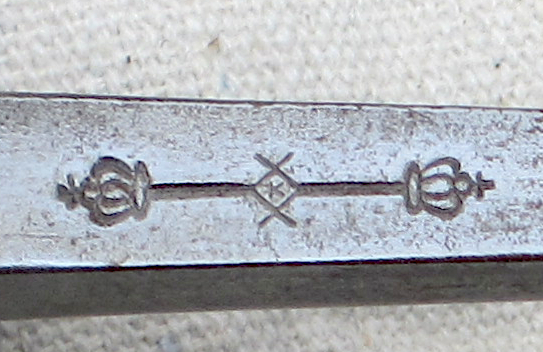

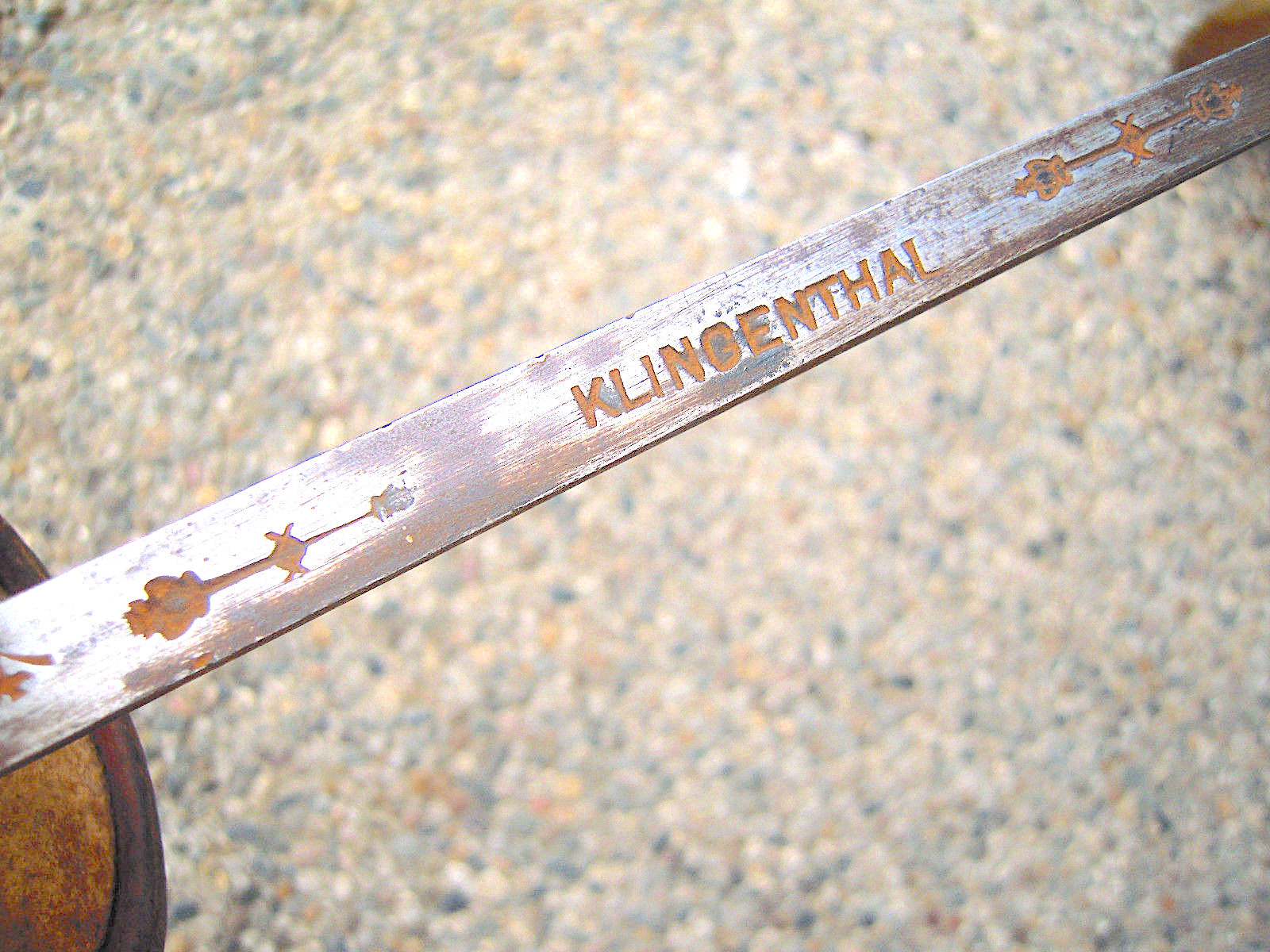
The reverse of this #4 foil blade provides the city of origin.
The fencing epee blades usually bear the name of company and town in cursive script (see image at the top of the posting).
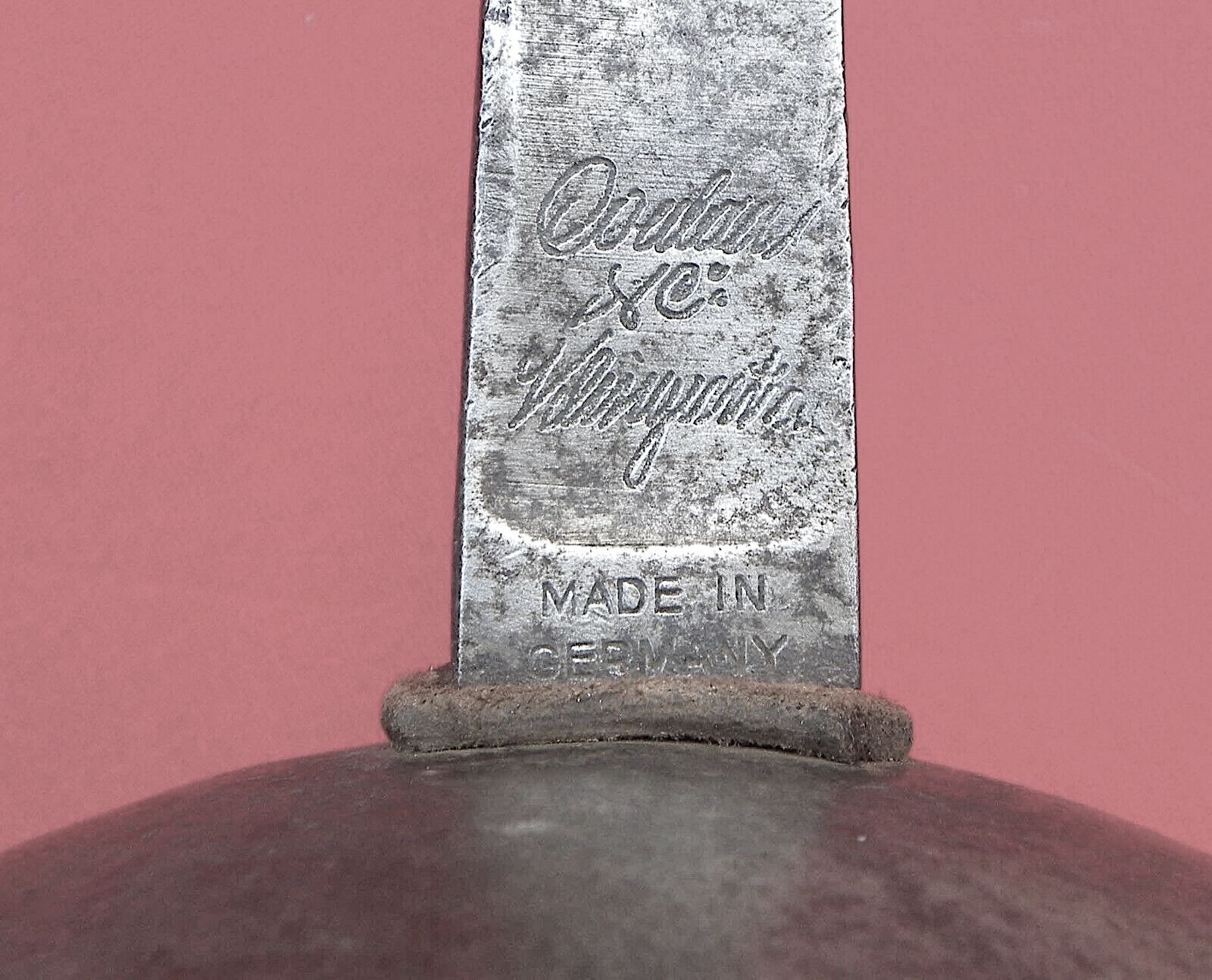
Marking on epee blade from the period between the Franco-Prussian War and WWI.
The Full Blade
It is somewhat rare to get a close loom at what lies underneath the shells of an épée grip. After all, most historic blades were riveted or peened for a tight fit.
The blade below was purchased in 2020 from a Lithuanian antiques dealer, who kindly provided a visual aid to ascertain the measurements:
The markings on the rounded part of the forte, near the tang is hard to make out. Is it C B? CH?? Based on the hard-to read second strike mark, this dueling blade was made between 1865 and 1885. There are no traces of it being used—the tang remains unmarred by peen or rivet. But the tip shows the annoying burr that occurs when the finely-honed point hits something (anything!) hard.
However, two additional markings are visible in the tang: A “V” on the flat, and what appears to be a “V” on the lateral surface:
The End of Klingenthal
After WWI, Klingenthal’s focus on sword and fencing blades yielded to the fabrication of utility blades, even coffee mills, which Coulaux continued to produce well into the 20th century. Sporting blades disappeared from its output, their production being absorbed by new forges in France, Germany, Italy. The Coulaux-run Klingenthal forges closed in 1962.
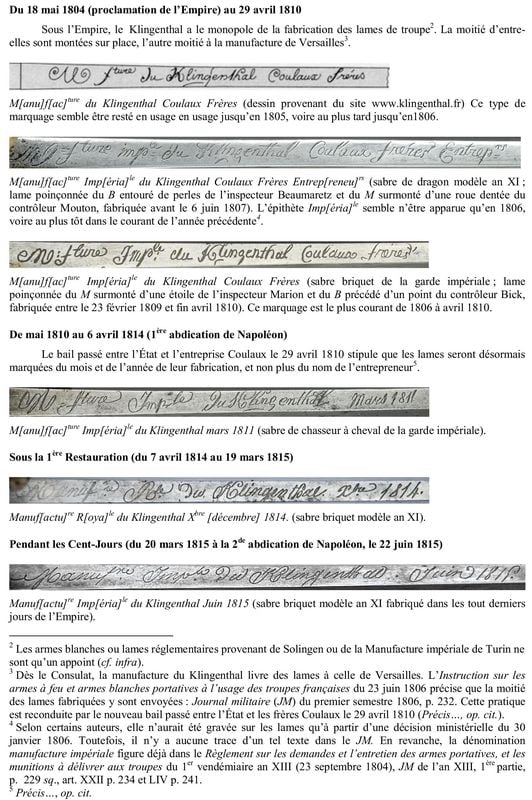
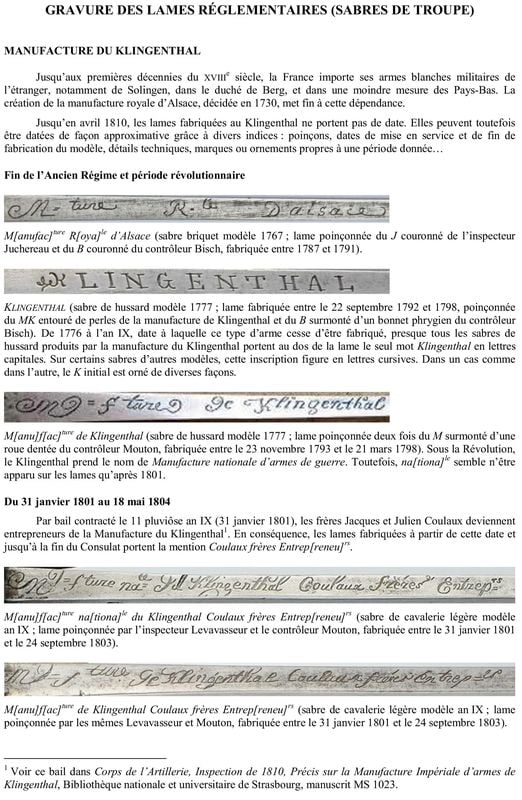
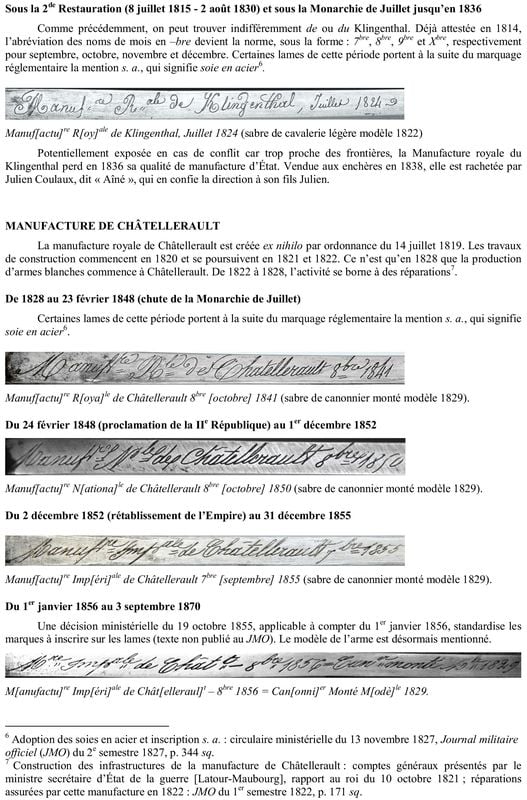
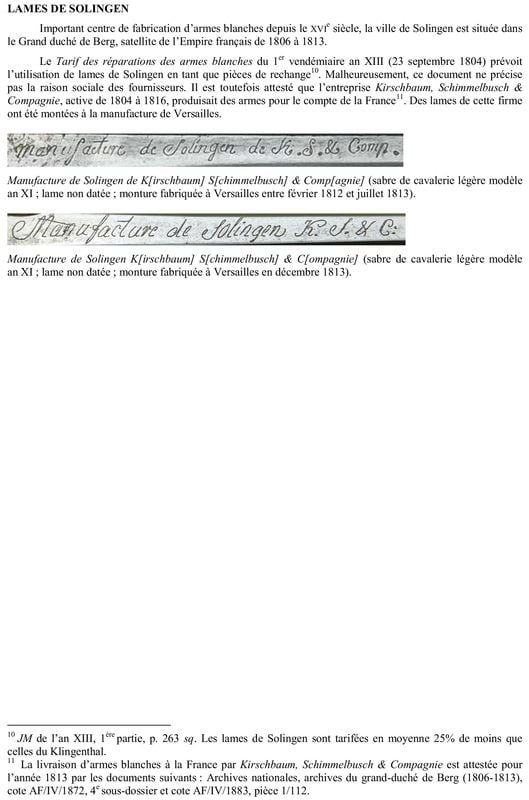
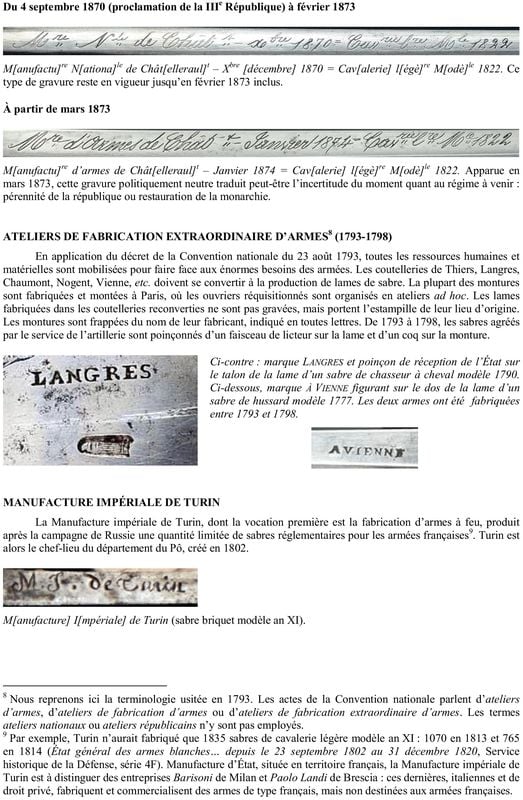



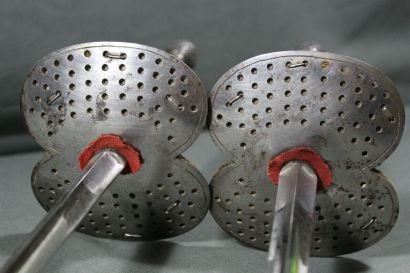
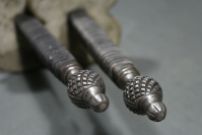
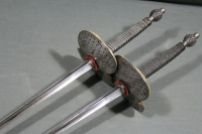
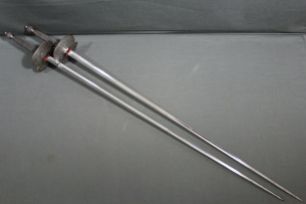
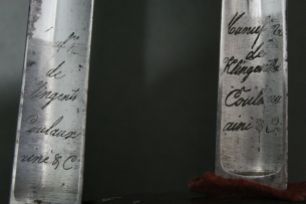
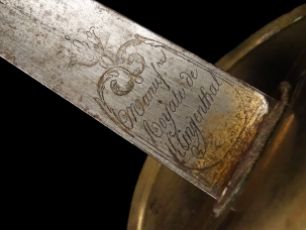
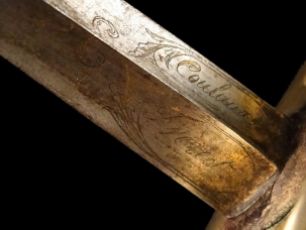
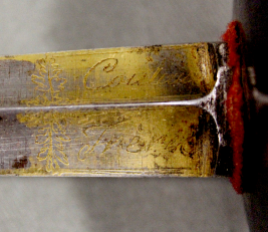
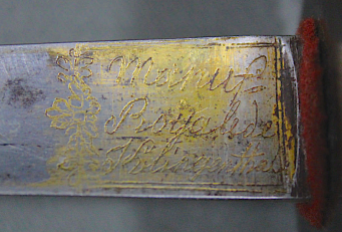
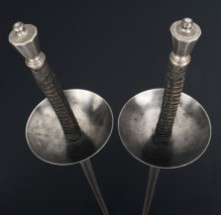
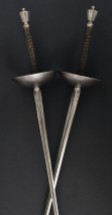
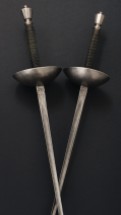
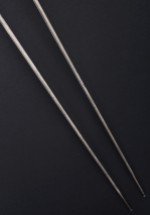
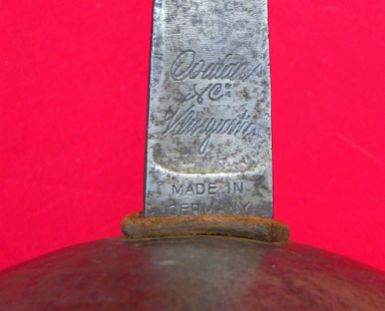
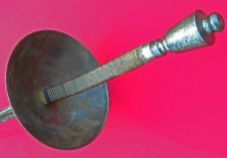
.jpg)
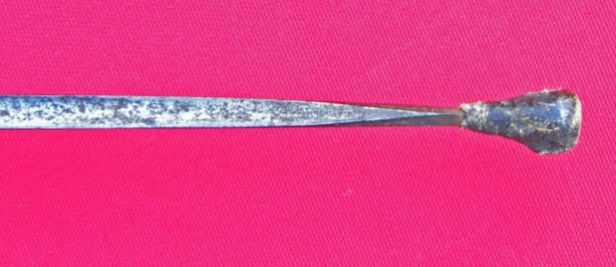

.jpg)


